A part program created in a CMM system’s software encompasses the utilization of contact sensors (tactile, scanning, surface), and non-contact sensors (laser and optical sensors), for a multi-sensor CMM.
The complex and varied nature of aerospace assemblies in the past has required multiple equipment measurement processes, slowing production time. Given the critical nature of aerospace manufacturing, product life-cycle requirements – every element in an engine or turbine must meet precise tolerances to ensure cost-efficient reliability – anything less simply isn’t an option.
The norm is 100% inspection and electronic data collection, and metrology solutions must keep pace. As regulatory requirements become stricter and production cycles become shorter, this is becoming a significant challenge. Consequently, the aerospace industry must find ways to validate designs ahead of final assembly.
Today, engineers rely on metrology techniques such as 3D modeling or CAD comparison to prevent expensive rework and speed final production without compromising accuracy. More recently, advances in CMM measurement are also helping aerospace-focused parts manufacturers better meet production and quality goals.
The CMM measurement challenge
From commercial airliners to high-tech fighter jets and space exploration vehicles, aerospace industry manufacturers must produce large, intricate parts to extremely high tolerances. Beyond dimensional measurement, proper hardness, contour, and surface roughness must also be verified.
CMM measurement of these additional three aspects on a part usually requires a sizable investment in capital and floor space for three dedicated machines. In addition to equipment-related costs, large aerospace parts require large, heavy components to be moved and positioned on each metrology measuring equipment.
Now, next-generation automated multi-sensor CMM measurement systems can measure a part’s dimensional characteristics, surface, contour, and form tolerances on a single multi-sensor machine – and do it with faster setup, accuracy, and repeatability.
The introduction of multi-sensor CMM measurement technology has been evolving as aerospace companies are rebounding from the downturn from the COVID-19 pandemic. Many are looking to adopt new smart factory automation processes to speed time-to-market and make it right the first time to meet ramped-up parts demand. Manufacturers are also challenged to improve processes for high-precision measurement of tensile strength, hardness, and intricate, tight-tolerance components made from exotic alloys. This intricacy, plus the large size and weight of aerospace parts, comes into play when selecting a CMM measurement solution to include surface, contour, and form.
From analog to automated
Advanced multi-sensor CMM measurement machines have abandoned manual processes and analog technology for electronic sensors and PC-based software. Instead of a physical needle moving on the face of a meter, the measurement values appear in the report from the PC interface, making the process more advanced and easier for CMM operators to use.
One advantage of this approach is the setup of the part being measured, and the overall measuring process, can be completed faster with less risk of human error.
Operators create a program in the system’s software for parts encompassing surface, contour, and form measurements. Then, the program controls the multi-sensor machine to automatically make each of the contact or non-contact measurements.
This automated approach replaces multiple dedicated machines, eliminating the need for operators to move parts to a different machine and reposition them for a different mode of measurement, virtually eliminating outside variables that could affect measurement accuracy. Automated, multi-sensor machines also show potential in improving several other critical areas.
Reduced cycle time
Multi-sensor CMM measurement machines are designed to save time throughout the entire process. For example:
- Scanning sensor – acquires hundreds of points a second for profile and form characteristics while providing detailed graphical profile tolerancing
- Laser sensor – acquires hundreds of thousands of points a second to produce a point-cloud for profile of surface graphical comparison to the CAD model
- Optical sensor – allows access to micro features too small for stylus diameters less than 0.3mm (0.0118")
- Surface sensor – allows contact roughness measurement without changing the workpiece setup and with the articulating probe head, roughness measurement of angled surfaces is enabled by changing the sensor
Data analytics support process improvements
The software driving automated multi-sensor CMM measurement systems makes it easy to generate reports exportable to analytics software or other data collection systems. Manufacturers can analyze the results of every measurement made by the machine, take an average, and chart it so they can ensure their processes are precise and highly efficient. Analysis of collected data through time makes it easier to identify bottlenecks or problem areas that could be improved.
Deciding between multi-sensor and standalone machines
Despite their potential benefits, multi-sensor machines aren’t right for every aerospace parts manufacturer. The choice of machine can also depend on the parts being produced. Certain components require only surface analysis, which could be performed with a dedicated machine. However, multi-sensor CMM measurement machines cover all three disciplines, plus automated measurement capabilities, which would be the best option for manufacturing parts needing surface, contour, and form measurement or if a company plans to expand into new products.
The future of CMM measurement
The more advanced, highly automated precision machines have the potential to provide cost savings by reducing part setup time and increasing repeatability. In addition, manufacturers can reclaim factory floor space by using only one measurement machine instead of three, as well as assigning just one system operator to better use manufacturing line staff.
The choice of a CMM measurement system – whether single or multi-sensor – depends on the company’s specific needs, what parts they are producing, and their vision for the future. With the recent emergence of more advanced multi-sensor machines, aerospace parts manufacturers have more options.



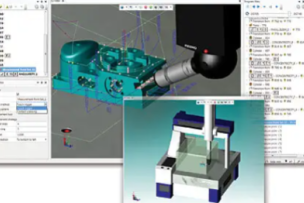
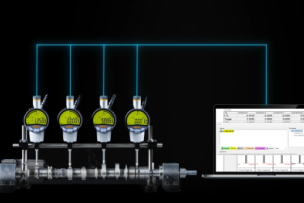
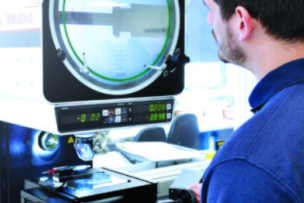
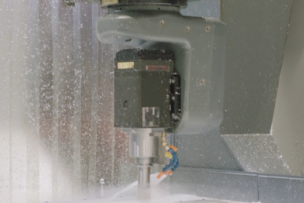
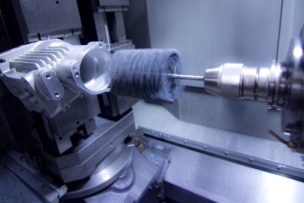
Talk to Us!
Leave a reply
Your email address will not be published. Required fields are marked *